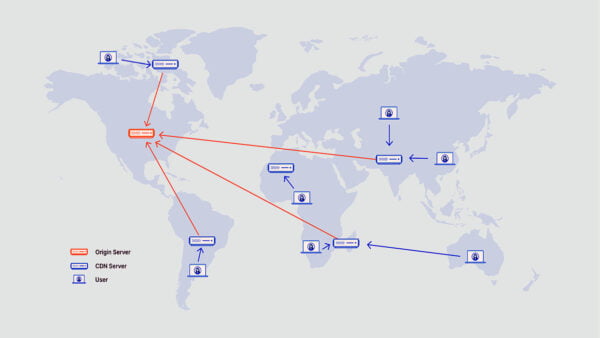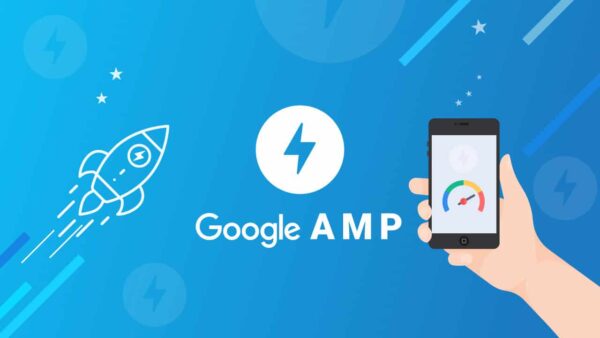12 Proven Strategies for Website Speed Optimization
In today’s digital age, website speed optimization is a critical factor that can make or break the success of your online presence. Slow-loading websites not only frustrate visitors but also impact your search engine rankings and conversions. In this comprehensive guide, we’ll explore 12 proven strategies to turbocharge your website’s speed, ensuring a seamless and lightning-fast user experience.
Website Speed Optimization is the art of enhancing your website’s loading speed. In today’s fast-paced world, users expect websites to load almost instantaneously. This expectation has elevated website speed optimization to a crucial factor in user satisfaction, SEO rankings, and conversion rates.
Understanding the Importance of Speed
Why Speed Matters
Website speed optimization is not just a luxury but a necessity in today’s digital landscape. A slow website can lead to a higher bounce rate, causing potential customers to leave before they even see your content or products.
- Slow loading times can lead to a high bounce rate.
- Google ranks faster websites higher in search results.
- Users expect websites to load in under 3 seconds.
47% of users expect a web page to load in 2 seconds or less.
Choose a reliable hosting provider with robust servers. A slow server can be a major bottleneck in your website’s speed.
The Impact on User Experience
User experience is closely tied to website speed. A fast-loading website ensures that visitors can quickly access the information they seek, leading to higher engagement and satisfaction.
A website that loads swiftly keeps users engaged and satisfied. Slow-loading sites frustrate visitors, leading to high bounce rates and decreased user retention.
Speed Enhances User Experience
- Faster websites lead to lower bounce rates.
- Improved user experience boosts brand reputation.
- Positive user experiences result in increased conversions.
79% of online shoppers who have trouble with website performance say they won’t return to the site to buy again.
Slow Speed = Lost Customers
- 40% of people abandon a website that takes more than 3 seconds to load.
- Amazon estimated a 1% revenue loss for every 100ms of delay.
Statistics: “A 1-second delay in page load time equals 11% fewer page views, a 16% decrease in customer satisfaction, and a 7% loss in conversions.” – Aberdeen Group Source: Aberdeen Group
SEO and Ranking Factors
Search engines like Google consider website speed as a ranking factor. A slow website may find it challenging to compete in search engine results pages (SERPs). Optimizing your site for speed can improve your SEO and visibility.
- Google considers page speed as a ranking factor.
- Faster websites have a better chance of reaching the top of search results.
Measuring Your Website’s Current Speed
Before embarking on the journey of website speed optimization, it’s crucial to have a clear understanding of your website’s current performance. This initial assessment provides you with valuable insights into where improvements are needed and serves as a benchmark for tracking progress. Here, we’ll explore the tools and techniques to effectively measure your website’s speed.
Tools for Speed Analysis
- Google PageSpeed Insights: This is a widely used tool by website owners and developers. It provides an in-depth analysis of your website’s speed on both desktop and mobile devices. Google PageSpeed Insights also offers suggestions on how to address performance issues.
- GTmetrix: GTmetrix is another popular tool that offers a comprehensive report on your website’s speed and performance. It provides data on PageSpeed and YSlow scores, as well as recommendations for optimization.
- Pingdom: Pingdom offers a user-friendly interface to test your website’s speed. It provides detailed information about your site’s load time, performance grade, and insights into areas that need improvement.
- WebPageTest: WebPageTest allows you to test your website’s speed from various locations and devices. It offers advanced features for in-depth performance analysis and waterfalls that show how individual elements on your page load.
Interpreting PageSpeed Insights
After running a speed test with one of these tools, you’ll be presented with a wealth of information. Here’s how to interpret the data and understand what it means:
- Page Load Time: This is the time it takes for your web page to fully load. Faster is better, and you’ll want to target load times under 3 seconds for an optimal user experience.
- PageSpeed Score: Tools like Google PageSpeed Insights assign a score to your website’s speed. A higher score indicates better performance. Pay attention to specific suggestions provided to improve this score.
- Optimization Opportunities: Speed analysis tools will often provide a list of optimization opportunities. These are specific issues and areas where your website can be improved. Common recommendations include optimizing images, leveraging browser caching, and reducing server response times.
- User Experience: Some tools assess the user experience, highlighting issues such as input delay and content layout shifts. These aspects are critical for a smooth and responsive user interface.
- Mobile Performance: Given the prevalence of mobile browsing, most speed analysis tools offer insights into your website’s mobile performance. Mobile speed optimization is essential for reaching a broader audience.
- Waterfall Charts: These charts provide a visual representation of how each element on your web page loads. By analyzing the waterfall, you can identify bottlenecks and elements that may be slowing down your site.
Next Steps After Analysis
Once you’ve measured your website’s speed and reviewed the analysis provided by the chosen tool, it’s time to take action. Prioritize the identified issues based on their impact and feasibility. Common areas to address include:
- Image Optimization: Resize and compress images to reduce their file size without sacrificing quality.
- Browser Caching: Configure your server to leverage browser caching and reduce the need to download static resources with each visit.
- Minify CSS and JavaScript: Remove unnecessary characters and white spaces from your code to reduce file sizes.
- Content Delivery Network (CDN): Consider using a CDN to distribute content closer to your users, reducing server latency.
- Server Optimization: Upgrade your hosting plan or server resources to handle increased traffic and requests more efficiently.
- Responsive Design: Ensure your website is responsive and mobile-friendly to cater to users on various devices.
- Database Cleanup: Regularly clean up and optimize your database to improve query performance.
- AMP Implementation: If mobile traffic is significant, explore implementing Accelerated Mobile Pages (AMP) to enhance mobile speed.
Speed optimization is an ongoing process, and regular testing and monitoring are essential to maintain peak performance. By starting with a thorough assessment and using the right tools, you can make informed decisions and significantly improve your website’s speed and user experience.
 Optimizing Images for Website Speed Optimization
Optimizing Images for Website Speed Optimization
Images are often a significant contributor to slow-loading web pages. To ensure your website loads quickly and provides a smooth user experience, it’s crucial to optimize images effectively. Here’s a comprehensive guide on how to do just that:
1. Choosing the Right Image Format
The choice of image format can significantly impact both image quality and file size. Here are the common image formats and when to use them:
- JPEG (Joint Photographic Experts Group): Ideal for photographs and images with a wide range of colors. JPEG uses lossy compression, which reduces file size but may slightly degrade image quality. Adjust the compression level to find the right balance between size and quality.
- PNG (Portable Network Graphics): Best for images with transparency or sharp edges, such as logos or icons. PNGs use lossless compression, preserving image quality, but resulting in larger file sizes compared to JPEG.
- WebP: A modern image format supported by most web browsers. WebP provides excellent compression and image quality. Consider using it for newer websites and browsers that support it.
2. Image Compression Techniques
Compression reduces an image’s file size without significantly compromising quality. Here are the primary image compression techniques:
- Lossless Compression: As used in PNG images, lossless compression retains image quality but may not achieve the smallest file sizes.
- Lossy Compression: JPEG images use lossy compression, which reduces file size by removing some image data. It’s crucial to strike a balance between compression and image quality.
- Online Image Compression Tools: Numerous online tools, like TinyPNG and Compressor.io, can compress images efficiently while maintaining acceptable quality. These tools are user-friendly and suitable for those with limited technical expertise.
- Image Editing Software: Professional image editing software like Adobe Photoshop and GIMP allow you to control compression settings precisely. This is especially useful for optimizing images that are critical to your website’s design.
3. Lazy Loading Images
Lazy loading is a technique that defers the loading of images until the user scrolls down the page and those images become visible in the viewport. This can dramatically improve initial page load times. Consider implementing lazy loading using HTML attributes or JavaScript libraries like LazyLoad.js.
4. Image Dimensions and Scaling
Always use images with dimensions that match their display size on the webpage. Avoid using large images and scaling them down using HTML or CSS. Scaling an image down after it has been downloaded wastes bandwidth and slows down page load times. Use image editing software to resize images to the exact dimensions required.
5. Responsive Images
For responsive web design, use the srcset attribute in HTML to provide different image versions for different screen sizes and resolutions. This ensures that users on various devices receive appropriately sized images, reducing unnecessary data transfer.
6. Image Optimization Plugins
If you use a Content Management System (CMS) like WordPress, consider using image optimization plugins like Smush or Imagify. These plugins automatically optimize images upon upload and can compress existing images in your media library.
7. Image Compression Tools
Advanced image optimization tools like ImageOptim (for macOS) or OptiPNG (command-line tool) provide more granular control over image optimization settings. They can be particularly useful if you’re looking to fine-tune image compression.
8. Image Lazy Loading Libraries
JavaScript libraries like LazyLoad.js and Intersection Observer API can assist in implementing lazy loading for your images. These libraries make it easier to apply lazy loading to a large number of images across your site.
9. Content Delivery Networks (CDNs) for Images
Consider using a CDN to deliver images. CDNs store cached copies of your images on servers distributed globally, reducing server response times and improving image load times for users around the world.
By following these image optimization techniques, you can significantly reduce page load times while maintaining image quality. Keep in mind that image optimization should be an integral part of your website speed optimization strategy, as it directly impacts user experience and SEO rankings. Regularly monitor and update your images as needed to ensure your site remains fast and responsive.
 Leveraging Browser Caching
Leveraging Browser Caching
Leveraging browser caching is a fundamental technique for improving website speed and user experience. It allows you to instruct web browsers to store and reuse certain resources from a user’s device, rather than re-downloading them with every visit. This reduces load times, server requests, and bandwidth usage. Here’s a comprehensive guide on how to effectively implement browser caching:
1. What Is Browser Caching?
At its core, browser caching is the process of instructing a web browser to store and retain specific resources (such as images, stylesheets, and scripts) locally on a user’s device after they’ve visited your website. When the user revisits your site or navigates to another page within it, these cached resources can be retrieved quickly from their device rather than being re-fetched from your web server.
2. Implementing Browser Caching
Implementing browser caching involves configuring your web server to include caching directives in the HTTP response headers it sends to clients (web browsers). Here’s a simplified breakdown of how to do it:
a. Set Cache-Control Headers
Use the Cache-Control HTTP header to define caching rules for different types of resources. Common directives include:
- public: Indicates that the resource can be cached by both the browser and intermediary proxies (like CDNs). Suitable for publicly accessible assets.
- private: Specifies that the resource can be cached by the user’s browser but not by intermediary caches. Useful for sensitive or user-specific content.
- max-age: Determines how long a resource can be cached in seconds. For example,
max-age=3600means the resource can be cached for one hour.
b. Set Expires Headers
The Expires HTTP header specifies an exact date and time when a resource expires and should no longer be used from the cache. While Cache-Control headers are more flexible, Expires headers are still supported by some older browsers.
c. Combine with ETags
Etag headers can be used in conjunction with caching headers to provide more fine-grained control over caching. Etags are unique identifiers generated by the server for specific resources. If the resource changes, the Etag changes, signaling the browser to fetch the updated resource.
d. Server Configuration
Depending on your web server (e.g., Apache, Nginx), you may need to configure caching rules in your server’s configuration files. These configurations specify which types of resources should be cached and for how long.
3. Setting Cache Expiration Times
Determining appropriate cache expiration times is crucial. Striking the right balance ensures that cached resources are used effectively without displaying outdated content. Consider these guidelines:
- Static Resources: Resources like images, stylesheets, and JavaScript files can have longer cache lifetimes (e.g., several months or even years) since they rarely change.
- Dynamic Resources: Content that frequently changes, such as news articles or user profiles, should have shorter cache lifetimes (e.g., minutes or hours).
4. Testing and Validation
After implementing browser caching, thoroughly test your website to ensure that resources are being cached and retrieved correctly. Use browser developer tools to inspect HTTP headers and check for cache hits and misses.
5. Handling Cache Invalidation
In some cases, you may need to force browsers to fetch a new version of a resource before its cache expires. You can achieve this by changing the resource’s filename, Etag, or using cache-busting techniques in your HTML.
6. Content Delivery Networks (CDNs) and Caching
If you use a CDN, it may handle caching automatically, reducing the load on your web server and improving global website performance. Make sure to configure the CDN’s caching settings to align with your website’s caching strategy.
By effectively leveraging browser caching, you can significantly enhance your website’s speed and reduce the load on your web server. Users will experience faster page load times, and you’ll save on bandwidth costs. Properly configured browser caching is a crucial component of website speed optimization and contributes to a smoother user experience.
Minifying CSS and JavaScript
Minifying CSS and JavaScript is a critical step in website speed optimization. It involves the reduction of file sizes by removing unnecessary characters, whitespace, and other elements without affecting the functionality of your code. Smaller file sizes mean faster load times and improved user experiences. Here’s a comprehensive guide on how to effectively minify CSS and JavaScript:
1. What Is Minification?
Minification is the process of removing or reducing elements in your CSS and JavaScript files that are not essential for the code to function correctly. These elements can include:
- Whitespace characters: Spaces, tabs, and line breaks.
- Comments: Code comments used for human readability.
- Redundant code: Unused or redundant code, such as extra spaces or semicolons.
- Long variable and function names: Replacing them with shorter, minified versions.
2. Reducing File Size
The primary goal of minification is to reduce the file size of your CSS and JavaScript files, making them more compact and efficient. Smaller file sizes mean faster downloads and reduced bandwidth usage, which ultimately leads to improved website speed.
3. Eliminating Whitespace
Whitespace, such as spaces, tabs, and line breaks, is essential for code readability but adds unnecessary bytes to your files. During minification, all of these whitespace characters are removed, resulting in a more concise code structure.
4. Removing Comments
Code comments are essential for developers to understand and maintain the code. However, they serve no purpose for the browser. Minification involves stripping out these comments to further reduce file size.
5. Using Minification Tools
Minifying CSS and JavaScript manually can be error-prone and time-consuming. Instead, use minification tools that automate the process:
a. CSS Minification Tools
- CSSNano: A popular CSS minifier that removes unnecessary whitespace, optimizes colors, and shortens selectors.
- CleanCSS: A tool that minifies CSS files, removes comments, and optimizes CSS rules for the smallest file size possible.
b. JavaScript Minification Tools
- UglifyJS: A widely used JavaScript minifier that not only removes whitespace and comments but also performs variable renaming and other optimizations.
- Terser: A JavaScript parser and minifier that offers advanced minification options while preserving the code’s functionality.
6. Configuration and Options
When using minification tools, you can often configure them to suit your specific needs. Consider options such as:
- Mangle variable and function names: This renames variables and functions to shorter, more cryptic names, further reducing file size.
- Source maps: These allow you to debug minified code by mapping it back to the original source code during development.
7. Integration into Build Processes
To ensure that your CSS and JavaScript files are consistently minified, integrate the minification process into your build or deployment pipeline. This automates the process, making it part of your development workflow.
8. Regular Testing
After minifying your code, thoroughly test your website to ensure that all functionality remains intact. Occasionally, aggressive minification can cause issues, so it’s crucial to catch and address any potential problems early.
9. Version Control and Backup
Before implementing minified code on your live website, make sure to keep unminified versions of your CSS and JavaScript files in version control or backup copies. This allows you to revert to the original code if any issues arise.
10. Content Delivery Networks (CDNs)
Some CDNs offer automatic minification as part of their services. If you use a CDN, check if this feature is available and configure it according to your requirements.
By minifying your CSS and JavaScript files, you can significantly reduce their file sizes, resulting in faster load times for your website. This optimization technique is an essential part of the website speed optimization process, enhancing the user experience and improving your site’s overall performance.

Content Delivery Networks (CDNs)
Content Delivery Networks (CDNs) are a vital component of website speed optimization. They help accelerate content delivery to users by distributing cached copies of your website’s static resources across a network of servers strategically positioned in various geographic locations. Here’s a comprehensive guide on CDNs and how they can optimize your website’s speed:
1. How CDNs Work
CDNs function as intermediaries between your web server and end-users, enhancing the delivery of content like images, stylesheets, scripts, and videos. Here’s how they work:
- Server Distribution: CDNs maintain multiple servers in data centers around the world. These servers store cached copies of your website’s static resources.
- Proximity to Users: When a user accesses your website, the CDN identifies their geographic location using DNS (Domain Name System) and routes the request to the nearest CDN server. This reduces the physical distance data must travel, reducing latency and speeding up content delivery.
- Caching Mechanism: The CDN caches your website’s static resources on its servers. When a user requests a resource, the CDN delivers it from the nearest server, eliminating the need for the request to reach your origin server.
2. Selecting the Right CDN
Choosing the right CDN for your website is crucial. Consider the following factors when making your selection:
- Geographic Coverage: Evaluate the CDN’s global reach. The more servers distributed worldwide, the better it can serve your international audience.
- Content Types: Some CDNs specialize in serving specific types of content, such as video streaming or e-commerce. Choose one that aligns with your website’s content.
- Performance: Look for a CDN that offers low-latency connections and high-speed data transfer. CDN providers often have tools to measure their network performance.
- Cost: CDNs come with varying pricing structures. Some offer pay-as-you-go plans, while others charge based on bandwidth or usage. Select a plan that suits your website’s needs and budget.
- Security: Ensure the CDN provides security features, such as DDoS protection and SSL/TLS support, to safeguard your website’s content.
- Scalability: As your website grows, you’ll want a CDN that can scale with your traffic without compromising performance.
Popular CDN providers include Cloudflare, Akamai, Amazon CloudFront, Fastly, Cloudways, DigitalOcean and KeyCDN. Each offers unique features and capabilities, so research thoroughly to find the best fit for your website.
3. Integrating with Your Website
Integrating a CDN with your website is typically straightforward:
- DNS Configuration: Update your DNS settings to point to the CDN’s servers. This may involve changing your domain’s DNS records to the CDN’s provided DNS settings.
- CDN Configuration: Depending on the CDN provider, you may need to configure settings in your CDN dashboard, such as specifying which resources to cache and defining cache expiration rules.
- SSL/TLS: If your website uses HTTPS, ensure that your CDN supports SSL/TLS encryption to maintain secure connections.
4. Cache Invalidation
CDNs store cached copies of your website’s resources for a specified duration. To ensure that users receive updated content when you make changes to your site, implement cache invalidation strategies. This may involve purging or expiring specific resources or using cache-busting techniques.
5. Monitoring and Reporting
Most CDNs provide tools for monitoring your website’s performance and traffic. Regularly analyze these reports to identify bottlenecks, troubleshoot issues, and optimize your CDN configuration.
6. Cost Considerations
CDN costs can vary based on usage, the volume of data transferred, and the features you require. Review your CDN provider’s pricing structure and evaluate your usage to optimize costs.
By integrating a CDN into your website infrastructure, you can significantly enhance your website’s speed, reduce server load, and improve the user experience for visitors worldwide. CDNs are an essential tool for delivering content efficiently in today’s globally connected digital landscape.
 Server Optimization
Server Optimization
Server optimization is a critical aspect of website speed and overall performance. It involves fine-tuning your web server and server-related configurations to ensure your website loads quickly, operates efficiently, and remains reliable, even under heavy traffic loads. Here’s an in-depth guide to server optimization and its role in enhancing your website:
1. What Is Server Optimization?
Server optimization encompasses a range of techniques and practices aimed at maximizing the efficiency and performance of the server that hosts your website. It involves optimizing both hardware and software components to ensure that your website responds quickly to user requests and maintains uptime.
2. Key Components of Server Optimization
a. Hardware Optimization
- Server Hardware: Invest in robust server hardware with sufficient CPU, RAM, and storage capacity to handle your website’s traffic demands. Consider using solid-state drives (SSDs) for improved data access speed.
- Load Balancing: Implement load balancers to distribute incoming traffic across multiple server instances. Load balancing ensures that no single server becomes overloaded, improving both performance and reliability.
- Scalability: Design your server infrastructure to be scalable, allowing you to add resources or additional servers as your website’s traffic grows. Cloud-based solutions like Amazon Web Service (AWS), Microsoft Azure, or Google Cloud are popular choices for scalability.
b. Software Optimization
- Web Server Software: Choose the right web server software for your needs, such as Apache, Nginx, or LiteSpeed. Configure it to handle requests efficiently, using techniques like connection pooling and request queuing.
- Content Delivery: Implement a Content Delivery Network (CDN) to distribute static assets (e.g., images, stylesheets, and JavaScript) closer to your users, reducing server load and improving load times.
- Caching: Configure server-side caching mechanisms to store frequently accessed data in memory, reducing the need to generate the same content repeatedly. Popular caching solutions include Varnish Cache and Memcached.
- Database Optimization: Optimize your database server by indexing tables, minimizing complex queries, and enabling caching for database queries. Regularly clean up and optimize your database to maintain performance.
- Security: Implement robust security measures, including firewalls, intrusion detection systems, and regular security audits to protect your server from threats and vulnerabilities.
- Content Compression: Use server-side compression techniques like Gzip or Brotli to reduce the size of data sent to users’ browsers, improving page load times.
- Content Minification: Minify HTML, CSS, and JavaScript files on the server to reduce file sizes and improve load times. Consider automating this process during build or deployment.
c. Server Configuration and Tuning
- Server Configuration Files: Review and fine-tune server configuration files to optimize resource usage, handle connection limits, and set appropriate timeouts.
- Monitoring and Metrics: Implement server monitoring tools to track server performance, resource usage, and error rates. Use this data to identify performance bottlenecks and address them promptly.
- Regular Maintenance: Schedule routine server maintenance tasks, such as updates, patches, and backups, to ensure the server operates reliably.
3. Scalability and Redundancy
Server optimization should include plans for scalability and redundancy. This involves the ability to scale resources up or down based on traffic demands and the implementation of failover mechanisms to ensure high availability.
4. Testing and Load Balancing
Perform load testing to simulate heavy traffic conditions and identify performance limitations. Load balancing, as mentioned earlier, helps distribute incoming traffic evenly across multiple servers to prevent overloads.
5. Serverless and Cloud Solutions
Consider serverless computing or cloud hosting solutions that allow you to focus on your application code while the cloud provider manages the underlying infrastructure, including scaling and optimization.
Server optimization is an ongoing process that requires continuous monitoring and adjustment as your website and traffic patterns evolve. By implementing these server optimization practices, you can ensure that your website remains fast, reliable, and capable of handling increased traffic, providing an excellent user experience for your visitors.
 Responsive Web Design
Responsive Web Design
Responsive web design is a fundamental approach to web development that focuses on ensuring your website’s content and layout adapt seamlessly to various screen sizes and devices. This technique plays a crucial role in providing a consistent and user-friendly experience for visitors regardless of whether they access your site on a desktop computer, tablet, or smartphone. Here’s an in-depth guide to responsive web design and how it can optimize your website:
1. What Is Responsive Web Design?
Responsive web design is a design and development approach that aims to create websites that automatically adjust their layout and content to match the user’s device and screen size. The primary goals of responsive design are:
- Fluidity: Design elements, such as text, images, and navigation menus, should flow and adapt to the available screen space.
- Optimal Viewing: Users should not have to zoom in or scroll excessively to read content or interact with the site.
- Consistency: The overall look and feel of the site should remain consistent across different devices.
2. Key Components of Responsive Web Design
a. Fluid Grid Layouts
Responsive web design often relies on a fluid grid system. Instead of fixed pixel-based layouts, elements are sized using relative units like percentages. This allows them to adjust dynamically based on screen size. Popular grid systems like Bootstrap and Foundation provide a responsive grid framework to streamline development.
b. Flexible Images and Media
Images and media should also be flexible and scale proportionally to the screen width. You can achieve this by using CSS techniques like max-width: 100%; to ensure images don’t exceed their container’s width.
c. Media Queries
Media queries are CSS rules that apply styles based on the user’s device characteristics, such as screen size, resolution, or orientation. They allow you to define specific styles for different screen sizes and adapt the layout accordingly.
d. Navigation Menus
Responsive navigation menus are critical for mobile users. Consider using techniques like a collapsible hamburger menu or dropdown menus to make navigation user-friendly on smaller screens.
3. Mobile-First Approach
One popular strategy in responsive web design is the “mobile-first” approach. This involves designing and optimizing your website for mobile devices first and then progressively enhancing it for larger screens. This approach aligns with modern user behavior, where mobile devices account for a significant portion of web traffic.
4. Testing and Debugging
Responsive design requires thorough testing across various devices and screen sizes. Use browser developer tools to simulate different screen dimensions and ensure that your site’s layout remains functional and visually appealing.
5. Frameworks and Libraries
To streamline the responsive design process, consider using front-end frameworks like Bootstrap, Foundation, or Materialize CSS. These frameworks provide pre-designed responsive components and grids, reducing the need for extensive custom coding.
6. SEO Considerations
Responsive design is favored by search engines like Google because it simplifies indexing and ranking. With a single URL for all devices, you avoid duplicate content issues. Additionally, Google prioritizes mobile-friendly websites in mobile search results, making responsive design crucial for SEO.
7. Performance Optimization
Responsive design can impact page load times. Optimize your site’s performance by using efficient coding practices, compressing images, and leveraging browser caching to ensure fast loading on all devices.
8. User Testing
Lastly, conduct user testing to gather feedback from visitors using different devices. Real-world feedback can help identify usability issues and guide further improvements.
Responsive web design is a vital aspect of modern web development, enabling your website to reach and engage users across a wide range of devices. By creating a seamless and consistent experience, you enhance user satisfaction, improve SEO rankings, and stay competitive in today’s diverse digital landscape.
 Reducing HTTP Requests
Reducing HTTP Requests
HTTP requests play a significant role in website performance, as they impact the time it takes for a web page to load. Each HTTP request made by a browser to fetch a resource (such as HTML, CSS, JavaScript, images, and other assets) adds to the overall load time. Reducing the number of HTTP requests is crucial for optimizing website performance. Here’s a comprehensive guide on how to achieve this:
1. Combine and Minify CSS and JavaScript
One of the most effective ways to reduce HTTP requests is to combine multiple CSS and JavaScript files into fewer files and then minify them. Combining files reduces the number of requests needed to fetch styles and scripts, while minification removes unnecessary whitespace and comments, resulting in smaller file sizes.
- CSS: Merge all CSS files into a single file. Use tools or build processes to automate this task. Similarly, minify the combined CSS file.
- JavaScript: Concatenate multiple JavaScript files into one, and minify the resulting file. Be cautious when combining JavaScript, as it can affect script dependencies and execution order.
2. Use CSS Sprites
CSS sprites involve combining multiple small images into a single larger image. By doing this, you reduce the number of image requests, as only one request is needed to fetch the sprite. CSS is then used to display the specific portion of the sprite required for each element on the page.
- Icons and Small Images: Consider using CSS sprites for icons, buttons, and small images that appear throughout your website.
3. Image Optimization
Images are often the heaviest assets on a web page. Optimize images to reduce their file sizes while maintaining quality.
- Image Compression: Use image compression techniques to reduce image file sizes. Tools like Adobe Photoshop, ImageOptim, Canva, or online services like TinyPNG can help.
- Responsive Images: Serve appropriately sized images for different devices and screen resolutions using the
srcsetattribute.
4. Lazy Loading
Lazy loading is a technique where images and other assets are loaded only when they come into the user’s viewport. This reduces the initial page load time, as assets further down the page are loaded on demand.
- HTML Attributes: Use the
loading="lazy"attribute for images to enable lazy loading. - JavaScript Libraries: Some JavaScript libraries and frameworks offer lazy loading functionality for various assets.
5. Use Content Delivery Networks (CDNs)
CDNs can help reduce the number of HTTP requests by delivering cached copies of assets from servers located closer to the user. This not only reduces latency but also lowers the load on your web server.
6. Limit External Requests
Minimize the number of external requests to third-party resources, such as fonts, scripts, or tracking scripts. These external requests can significantly impact page load times.
- Local Hosting: Host third-party resources locally when possible to reduce external dependencies.
7. Deferred Loading
Defer the loading of non-essential scripts and assets until after the initial page has loaded. This allows the core content to appear more quickly.
- Async and Defer Attributes: Use the
asyncanddeferattributes for JavaScript files to control when they are loaded and executed.
8. HTTP/2 and Resource Bundling
If your server supports HTTP/2, it can handle multiple simultaneous requests more efficiently. Take advantage of HTTP/2 by bundling related resources into a single request, reducing the need for multiple HTTP connections.
9. Regular Auditing and Monitoring
Regularly audit your website’s assets and monitor HTTP requests using browser developer tools and performance testing tools. This helps identify and address areas for optimization.
Reducing HTTP requests is a crucial step in optimizing website performance. By following these strategies and techniques, you can significantly improve page load times, enhance the user experience, and improve your website’s overall performance.
 Database Optimization
Database Optimization
Database optimization is a critical aspect of maintaining a high-performing and efficient website. A well-optimized database can significantly improve website speed, responsiveness, and overall user experience. Here’s an in-depth guide on how to optimize your database for optimal performance:
1. What Is Database Optimization?
Database optimization involves the process of fine-tuning and configuring your database management system (DBMS) to operate efficiently and deliver optimal performance. It focuses on optimizing database queries, reducing unnecessary data retrieval, and ensuring data integrity.
2. Key Components of Database Optimization
a. Indexing
Indexing is a fundamental technique for improving database query performance. Indexes are data structures that store a subset of the data in a table, allowing the database to quickly locate and retrieve specific rows. Properly indexed tables can significantly speed up SELECT queries.
- Primary Keys: Ensure that every table has a primary key, which automatically creates a unique index. This helps in efficient row retrieval.
- Foreign Keys: Index foreign keys, as they are often used in JOIN operations.
- Composite Indexes: Create composite indexes for columns frequently used together in queries.
b. Query Optimization
Optimizing database queries is crucial for reducing response times. This involves writing efficient SQL queries and using appropriate indexing.
- EXPLAIN Statements: Use database-specific
EXPLAINstatements to analyze query execution plans. This helps identify performance bottlenecks and suggests ways to optimize queries. - Avoid SELECT: Instead of selecting all columns from a table, specify only the columns you need. This reduces data transfer and processing overhead.
- Avoid Subqueries: Subqueries can be resource-intensive. Whenever possible, rewrite queries to use JOIN operations.
- Limit Data Retrieval: Use the
LIMITclause to restrict the number of rows returned in a query, especially for pagination.
c. Database Schema Design
A well-designed database schema can significantly impact performance.
- Normalization: Normalize the database to reduce data redundancy and maintain data integrity. However, avoid excessive normalization, as it can lead to complex joins and slower queries.
- Denormalization: In some cases, denormalization can be beneficial for read-heavy workloads. It involves storing redundant data to eliminate the need for complex joins.
d. Connection Pooling
Use connection pooling to manage database connections efficiently. Connection pooling reuses existing database connections rather than opening and closing a new connection for each client request. This reduces overhead and improves response times.
e. Caching
Implement caching mechanisms to store frequently accessed data in memory. This reduces the need to repeatedly query the database for the same data. Popular caching solutions include Memcached and Redis.
f. Regular Maintenance
Regularly perform database maintenance tasks, including:
- Index Rebuilding: Rebuild or reorganize indexes periodically to maintain optimal index performance.
- Vacuuming and Cleaning: Clean up unused or obsolete data to free up space and optimize query performance.
- Backup and Recovery: Implement robust backup and recovery strategies to ensure data integrity and availability.
3. Monitoring and Performance Tuning
Use database monitoring tools to track database performance and resource utilization. Set up alerts to proactively address performance issues.
4. Scaling Strategies
As your website grows, consider database scaling strategies, such as vertical scaling (adding more resources to the existing server) or horizontal scaling (adding more database servers). Techniques like sharding and partitioning can help distribute data efficiently.
5. Testing and Profiling
Before deploying changes to your database, thoroughly test and profile queries to ensure they perform as expected. Load testing can help identify performance bottlenecks under heavy traffic.
Database optimization is an ongoing process that requires continuous monitoring and adjustment as your website and traffic patterns evolve. By implementing these database optimization practices, you can ensure that your database operates efficiently, responds quickly to queries, and contributes to a seamless user experience.
 AMP (Accelerated Mobile Pages)
AMP (Accelerated Mobile Pages)
Accelerated Mobile Pages (AMP) is an open-source initiative designed to improve the performance and speed of mobile web pages. It aims to create lightweight, fast-loading web pages that provide a seamless and efficient user experience on mobile devices. Here’s an in-depth guide on AMP and how it can optimize mobile web experiences:
1. What Is AMP?
AMP is an open-source project launched by Google in collaboration with other tech companies and publishers. Its primary goal is to address the challenges of slow-loading web pages on mobile devices by simplifying and streamlining the way web pages are built and served.
2. Key Components of AMP
a. HTML Enhancements
AMP uses a subset of HTML with specific enhancements to ensure faster rendering. Some notable HTML features and enhancements in AMP include:
- AMP HTML: A subset of standard HTML with custom AMP-specific elements and attributes. These elements are designed to enforce performance best practices.
- Async Loading: Resources like images and iframes are loaded asynchronously by default, preventing them from blocking the main page rendering.
- Size Constraints: AMP enforces size constraints on resource loading to prevent excessive layout recalculations.
b. JavaScript Handling
One of the significant differences in AMP is its approach to JavaScript. JavaScript execution can be a performance bottleneck on mobile devices. In AMP:
- Limited JavaScript: AMP restricts the use of JavaScript to ensure that it doesn’t hinder page load times. Custom JavaScript is allowed but with certain limitations.
- AMP Bindings: Custom JavaScript interactions are facilitated through AMP components called “bindings,” which are designed to be efficient and non-blocking.
c. Caching and Preloading
AMP pages are typically served through AMP caches, which are proxy servers operated by content delivery networks (CDNs). These caches automatically optimize and deliver AMP content to users. Key caching features include:
- Pre-rendering: AMP caches often pre-render pages, loading them before the user clicks, which results in nearly instant loading times when the user navigates to the page.
- Optimized Resource Delivery: Images and other assets are optimized by the cache to reduce their file sizes and improve delivery speed.
d. Responsive Design
AMP encourages responsive web design principles, ensuring that AMP pages look and function well on various screen sizes and devices.
3. Benefits of AMP
- Faster Loading Times: AMP pages load significantly faster than traditional web pages, providing users with almost instant access to content.
- Improved SEO: Google prioritizes AMP pages in its search results, leading to potential SEO benefits for publishers and website owners.
- Enhanced User Experience: Faster load times and a more streamlined design contribute to a better overall user experience on mobile devices.
- Higher Visibility in Google Search: AMP pages often appear in the “Top Stories” carousel and are featured prominently in Google’s mobile search results, increasing visibility and click-through rates.
4. How to Implement AMP
To implement AMP on your website, follow these steps:
- Create AMP versions of your web pages by adhering to AMP HTML and AMP JavaScript guidelines.
- Validate your AMP pages to ensure they meet AMP standards using the AMP validator.
- Set up AMP caching through a content delivery network (CDN) or use Google’s AMP Cache.
- Add structured data to your AMP pages to enhance their visibility in search results.
- Monitor and maintain your AMP pages to ensure they continue to meet performance standards.
5. Limitations and Considerations
While AMP offers significant performance benefits, it also has some limitations:
- Customization: AMP limits certain customizations and JavaScript functionality to ensure performance and security.
- Analytics: Implementing advanced analytics and tracking on AMP pages may require additional effort.
- Advertisements: AMP pages have strict guidelines for serving ads to ensure that they do not negatively impact performance.
AMP is an effective solution for optimizing mobile web experiences by dramatically improving page load times and user engagement. By adhering to AMP standards and guidelines, website owners and publishers can deliver faster and more efficient content to mobile users while benefiting from improved search engine visibility.
 Continuous Monitoring and Testing
Continuous Monitoring and Testing
Continuous monitoring and testing are integral to maintaining and optimizing website performance. These practices involve regularly assessing your website’s speed, functionality, and user experience to identify issues, make improvements, and ensure that it operates at its best. Here’s a comprehensive guide on continuous monitoring and testing for website performance optimization:
1. Why Continuous Monitoring and Testing Matters
Website performance can fluctuate over time due to various factors, including increased traffic, content changes, software updates, and external influences. Continuous monitoring and testing help address these challenges by providing several benefits:
- Early Issue Detection: Regular monitoring and testing allow you to detect performance issues as soon as they arise, preventing them from affecting users.
- User Experience Improvement: Identifying and addressing bottlenecks or usability problems ensures that users have a positive experience, reducing bounce rates and improving retention.
- Performance Benchmarking: Continuous monitoring helps establish performance benchmarks, allowing you to track improvements or regressions over time.
- SEO Benefits: Search engines like Google consider website speed and user experience when ranking pages. Regular monitoring and testing can boost your SEO efforts.
2. Key Components of Continuous Monitoring and Testing
a. Performance Testing
Performance testing assesses how well your website performs under specific conditions, such as heavy traffic, different devices, or various network speeds. Common performance tests include:
- Load Testing: Simulates heavy traffic to determine how your website handles high user loads. Tools like Apache JMeter and Gatling can help with load testing.
- Stress Testing: Pushes your website to its limits to identify performance bottlenecks and potential failures under extreme conditions.
- Usability Testing: Evaluates how easily users can navigate and interact with your site, identifying usability issues that may impact user experience.
b. Speed Testing
Speed testing focuses on the website’s load times and responsiveness. Tools like Google PageSpeed Insights and GTmetrix assess various aspects of speed, including:
- Page Load Times: Measure how long it takes for web pages to load, including the first contentful paint (FCP) and time to interactive (TTI).
- Optimization Opportunities: Identify specific areas for improvement, such as image compression, browser caching, and JavaScript minification.
- Mobile-Friendly Design: Evaluate how well your website performs on mobile devices, addressing mobile-specific issues.
c. Error and Bug Tracking
Continuous monitoring involves tracking and addressing errors and bugs as they occur. Implement tools like error tracking systems and application performance monitoring (APM) solutions to:
- Log Errors: Automatically log errors and exceptions to help identify and fix issues promptly.
- Alerts and Notifications: Set up alerts and notifications to receive real-time updates on critical errors.
d. Real User Monitoring (RUM)
RUM collects data from actual users’ interactions with your website. It provides insights into user behavior, including page load times, device usage, and geographic location. RUM data helps you make informed decisions to optimize the user experience.
e. Synthetic Monitoring
Synthetic monitoring involves using automated scripts to simulate user interactions and test specific website functionalities. It helps identify issues that may not be apparent from real user data alone.
3. Continuous Improvement
Continuous monitoring and testing should be part of an ongoing improvement process:
- Regular Testing: Schedule routine tests to assess your website’s performance and functionality.
- Documentation: Document test results and any actions taken to address issues.
- Feedback Loops: Encourage feedback from users and stakeholders to identify pain points and areas for improvement.
- Iterative Optimization: Continuously make improvements based on the data and insights gathered from monitoring and testing.
4. Tools and Services
Numerous tools and services are available to assist with continuous monitoring and testing. Some popular options include Google Analytics, New Relic, Datadog, Sentry, and Pingdom, among others. Choose tools that align with your specific monitoring and testing needs.
Continuous monitoring and testing are essential practices to ensure that your website maintains optimal performance, meets user expectations, and remains competitive in today’s digital landscape. By proactively identifying and addressing issues, you can provide a seamless and enjoyable experience for your visitors while optimizing your website’s overall performance.
Conclusion
In today’s digital landscape, website speed optimization is not just a luxury but a necessity. It affects user experience, SEO rankings, and overall online success. By implementing the 12 proven strategies discussed in this guide, you can ensure that your website loads lightning-fast, keeping visitors engaged and satisfied.
Website Speed Optimization is non-negotiable. It not only enhances user experience but also boosts SEO rankings and conversion rates. Implement these strategies to ensure your website loads at lightning speed, ultimately propelling your online success.
 Key Takeaways
Key Takeaways
In the world of online business, website speed optimization is crucial. A slow-loading website can lead to high bounce rates, lost customers, and a drop in search engine rankings. To ensure your website performs at its best, consider the following key elements:
- Loading Speed: Fast loading times are essential for user experience and SEO. Aim for pages to load in under 2 seconds.
- Mobile Responsiveness: Ensure your site is mobile-friendly as more users access websites on their smartphones.
- Image Compression: Compress images to reduce file sizes without compromising quality.
- Minimize HTTP Requests: Reduce the number of elements on a webpage that require separate HTTP requests.
- Browser Caching: Enable browser caching to store static resources locally, improving load times on return visits.
- Content Delivery Network (CDN): Use a CDN to distribute content across multiple servers for faster loading worldwide.
- Code Optimization: Streamline and minify code to eliminate unnecessary characters and improve load times.
- Server Performance: Choose a reliable hosting provider with good server performance and uptime.
- Regular Updates: Keep your website and plugins up to date to benefit from performance improvements.
By focusing on these elements, you can optimize your website’s speed and provide a better user experience, ultimately boosting your online success.
As you delve into the world of Website Speed Optimization, keep in mind that it’s not just about speed but also about providing a better online experience for your visitors. By following the strategies outlined in this article and avoiding common pitfalls, you’ll be on your way to a faster, more successful website. Stay committed to regular testing and monitoring to ensure your site continues to deliver top-notch performance. Your users and search engines alike will reward you for it.
FAQs
1. What is the ideal loading time for a website?
The ideal loading time for a website is under 3 seconds. Studies show that users tend to abandon sites that take longer to load.
2. Do I need technical expertise to optimize my website’s speed?
While technical expertise can help, many website speed optimization techniques can be implemented by website owners with basic knowledge using online tools and guides.
3. What is browser caching, and how does it improve speed?
Browser caching stores static resources like images and scripts locally on a user’s device, reducing the need to download them with each visit, thus speeding up page loading.
4. Is mobile optimization important for website speed?
Yes, mobile optimization is crucial. With the majority of web traffic coming from mobile devices, ensuring your site is fast on mobile is essential for user satisfaction and SEO.
5. How often should I monitor my website’s speed?
It’s a good practice to monitor your website’s speed regularly, at least once a month. This helps you catch and address performance issues early on. Optimize your website for speed today and watch your online presence soar to new heights!.
Photo by Unsplash













 Optimizing Images for Website Speed Optimization
Optimizing Images for Website Speed Optimization Server Optimization
Server Optimization Responsive Web Design
Responsive Web Design Reducing HTTP Requests
Reducing HTTP Requests Database Optimization
Database Optimization AMP (Accelerated Mobile Pages)
AMP (Accelerated Mobile Pages) Continuous Monitoring and Testing
Continuous Monitoring and Testing Key Takeaways
Key Takeaways




